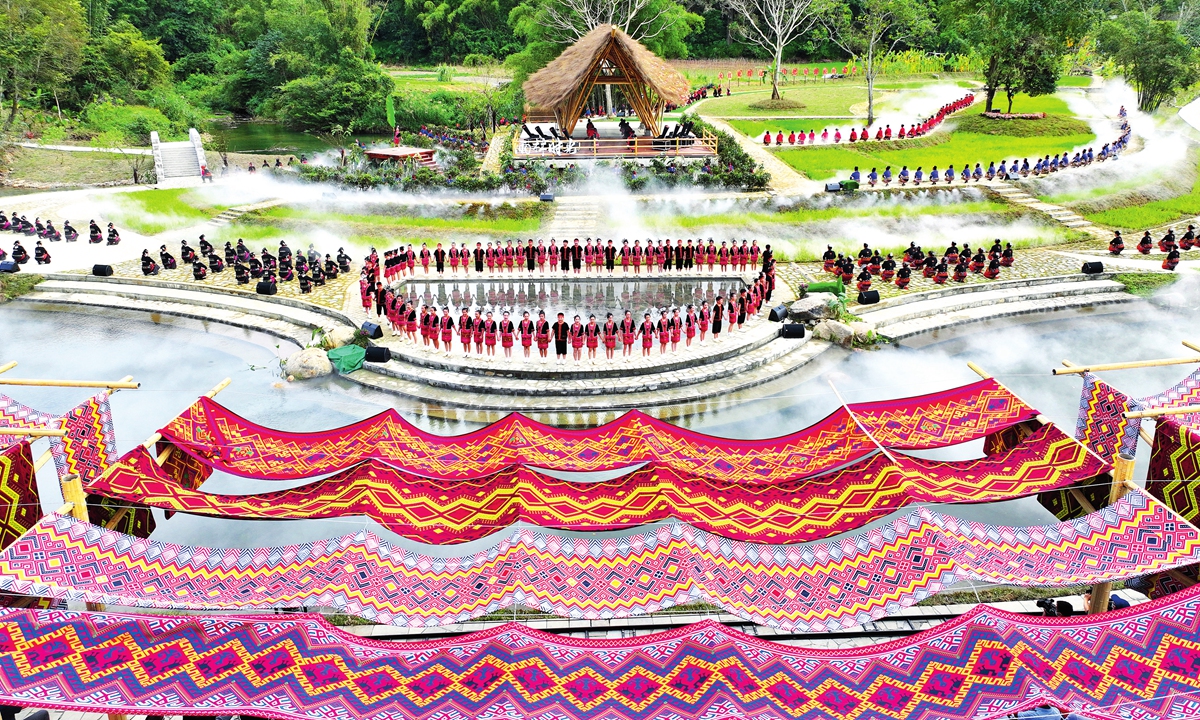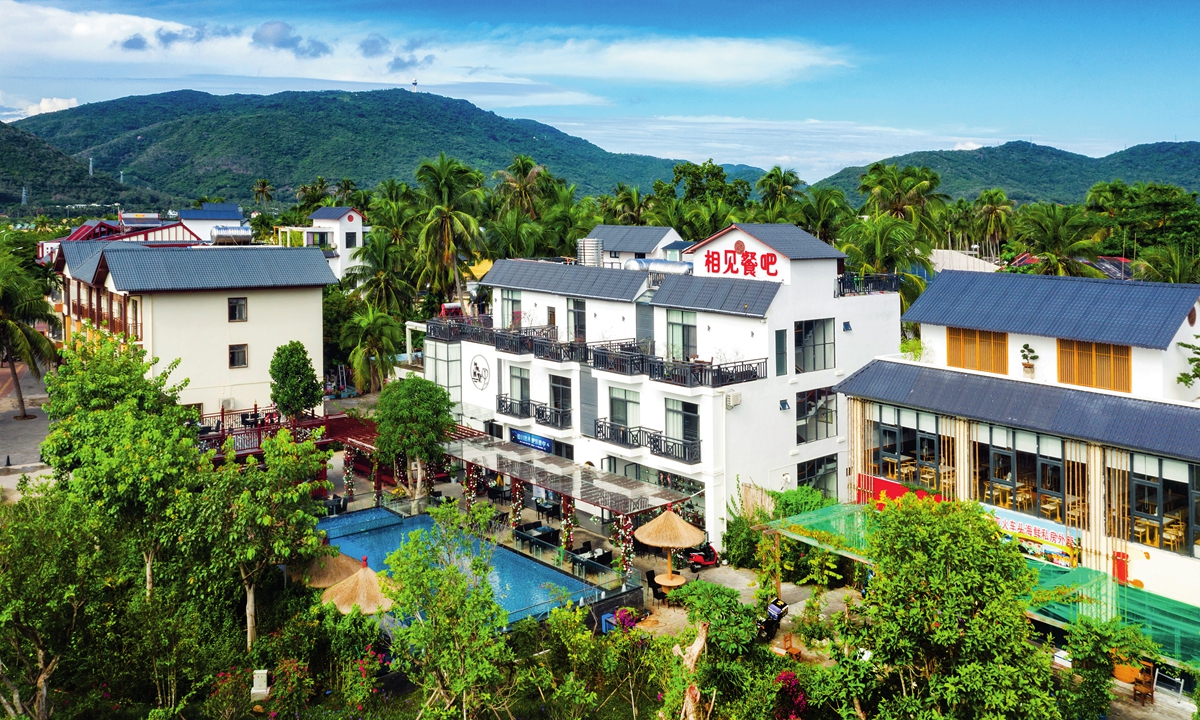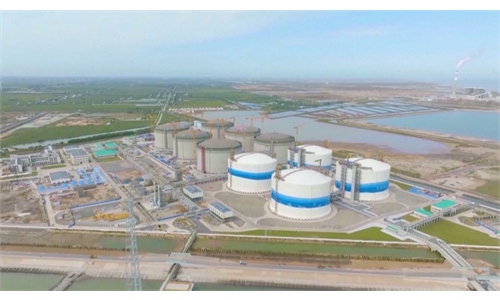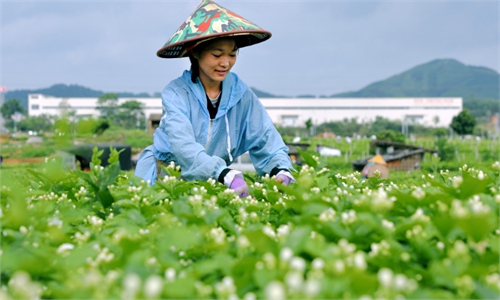
An idyllic performance is held in Maona village of Wuzhishan city on November 13, 2022. Photo: Courtesy of China Rural Revitalization magazine
Editor's Note:China Rural Revitalization magazine has published a series of articles on the rapid development of rural areas in China with new transformations. The articles reflect the arduous efforts of rural revitalization across China, which is an important and genuine solution to China's rural economic development. In the future, articles selected from this series will be published.
"Whether Xiaokang is realized or not, only ordinary folks can tell." During Chinese President Xi Jinping's visit to South China's Hainan Province in 2013, he dropped in on a small village named Bohou and made this statement that later became a catch phrase.
From 2013 to 2022, Xi made several trips to the province's countryside. During his trips to some villages of Hainan, Xi inspected local specialty industries and gave important instructions for the subsequent development of the industries.
Villages in Hainan Province thrive thanks to development of local industries, particularly in the homestay sector and tea planting industry. These have become pillars of Hainan's rural revitalization, bringing prosperity to the local community.
Industry integration
43-year-old Pu Zhaoshan is one of the villagers who has become rich through the development of the homestay industry in Bohou village.
In 2019, he started homestay business, with the revenue reaching 200,000 yuan ($27,516.6) in the first month. At present, Pu basically works all year round, and the Pu couple manage nine rooms.
"We have more middle-aged and older visitors here, with nearly 50 percent of our visitors being frequent customers," Pu said.
In Bohou village, Pu Zhaoshan is just one of the many examples of success in the local homestay industry. The small village now has 64 homestays, with a total of nearly 2,000 rooms, becoming one of the largest homestay villages in Hainan.

Bohou village has 64 homestays with different styles, which have vigorously stimulated the local catering sector. Photo: Courtesy of China Rural Revitalization magazine
The development of the homestay industry has also given rise to the local "night economy," driving more than 300 villagers to start their own businesses. Pu can earn 200-300 yuan a night in his small durian stall during the peak season.Now, in Bohou village, "night economy" has started to feed the homestay industry and rural tourism, enriching the village's business and raising the villagers' income.
During the Spring Festival of 2024, the occupancy rate of the village's homestays reached 92.94 percent, and the village received 46,000 tourist trips, with a total income of 24.07 million yuan.
Green economy
In 2022, Xi visited Maona, a village in Wuzhishan of Hainan Province, to learn about the alignment of rural revitalization with the achievements in poverty alleviation.
During that Hainan inspection, Xi visited the home of Wang Bohe, a local villager, and took part in the process of frying tea leaves at the family's handmade-tea workshop, where he bought two packets of tea. He encouraged Wang and his family to run the tea business well and to become increasingly well-off.
Under the principle of developing industries based on local conditions, Maona, located in the mountains, has now become another epitome of the rural revitalization of Hainan Province.
In recent years, the village developed the tea industry, continuously promoting organic agricultural production, rural tourism, leisure agriculture and other industries.
In order to promote the development of tea planting and production, the local government has provided a comprehensive technical training for the farmers. Moreover, local specialists have provided farmers with technical guidance on the prevention and control of tea pests and diseases, realizing a "one-stop" assistance program that includes tea planting, seedling care, tea collection and product processing.
In order to promote the sustainable development of the tea industry, the village has built nine tea factories and three tea cooperatives. In 2023, the tea planting area of the whole village totaled about 2,300 mu (153.3 hectares), and the new area reached 500 mu. The income from fresh tea leaves reached 2.7 million yuan, and the tea industry brought an average of nearly 20,000 yuan per year to each household.
Under the idea of tea, culture and tourism integration, Maona village has become a popular attraction. In 2023, the village received a total of 234,400 tourist trips, a year-on-year increase of 233.69 percent.
The tourism revenue amounted to 11.7 million yuan, representing an increase of 233.5 percent, compared with the previous year.
Ten years on, the village's disposable income per capita increased from 6,359 yuan in 2013 to 22,000 yuan in 2023.
China unveiled its "No.1 central document" for 2024 in February, outlining the priorities for comprehensively promoting rural revitalization this year.
As the first policy statement released by China's central authorities each year, the document is seen as an indicator of policy priorities.
The document encompasses six parts, including ensuring national food security, forestalling any large-scale relapse into poverty, improving rural industries' development, strengthening rural construction, enhancing rural governance, and strengthening the leadership of the Communist Party of China on work regarding agriculture, rural areas and farmers.
To promote Chinese modernization, it is essential to keep consolidating the foundations of agriculture and push forward rural revitalization comprehensively, the document said.
It also highlighted the need to study and apply the Green Rural Revival Program's development philosophy, working methods and advancement mechanisms.
A people-centered development philosophy needs to be upheld to deliver tangible benefits to the people and make substantial progress, according to the document.



